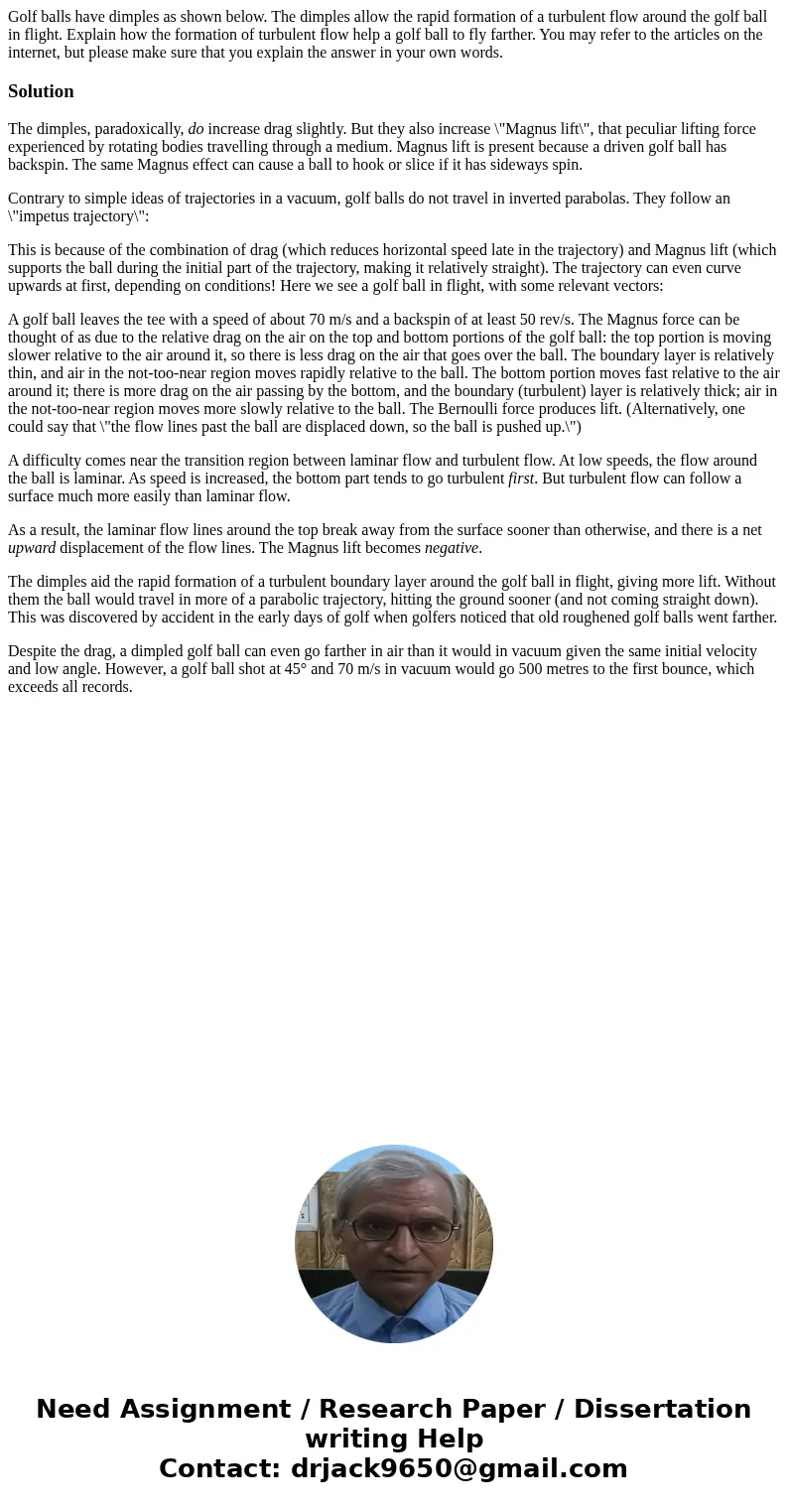Golf balls have dimples as shown below The dimples allow the
Solution
The dimples, paradoxically, do increase drag slightly. But they also increase \"Magnus lift\", that peculiar lifting force experienced by rotating bodies travelling through a medium. Magnus lift is present because a driven golf ball has backspin. The same Magnus effect can cause a ball to hook or slice if it has sideways spin.
Contrary to simple ideas of trajectories in a vacuum, golf balls do not travel in inverted parabolas. They follow an \"impetus trajectory\":
This is because of the combination of drag (which reduces horizontal speed late in the trajectory) and Magnus lift (which supports the ball during the initial part of the trajectory, making it relatively straight). The trajectory can even curve upwards at first, depending on conditions! Here we see a golf ball in flight, with some relevant vectors:
A golf ball leaves the tee with a speed of about 70 m/s and a backspin of at least 50 rev/s. The Magnus force can be thought of as due to the relative drag on the air on the top and bottom portions of the golf ball: the top portion is moving slower relative to the air around it, so there is less drag on the air that goes over the ball. The boundary layer is relatively thin, and air in the not-too-near region moves rapidly relative to the ball. The bottom portion moves fast relative to the air around it; there is more drag on the air passing by the bottom, and the boundary (turbulent) layer is relatively thick; air in the not-too-near region moves more slowly relative to the ball. The Bernoulli force produces lift. (Alternatively, one could say that \"the flow lines past the ball are displaced down, so the ball is pushed up.\")
A difficulty comes near the transition region between laminar flow and turbulent flow. At low speeds, the flow around the ball is laminar. As speed is increased, the bottom part tends to go turbulent first. But turbulent flow can follow a surface much more easily than laminar flow.
As a result, the laminar flow lines around the top break away from the surface sooner than otherwise, and there is a net upward displacement of the flow lines. The Magnus lift becomes negative.
The dimples aid the rapid formation of a turbulent boundary layer around the golf ball in flight, giving more lift. Without them the ball would travel in more of a parabolic trajectory, hitting the ground sooner (and not coming straight down). This was discovered by accident in the early days of golf when golfers noticed that old roughened golf balls went farther.
Despite the drag, a dimpled golf ball can even go farther in air than it would in vacuum given the same initial velocity and low angle. However, a golf ball shot at 45° and 70 m/s in vacuum would go 500 metres to the first bounce, which exceeds all records.

 Homework Sourse
Homework Sourse